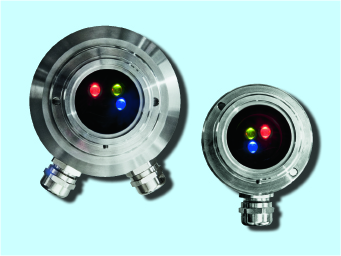Progress in the breeding of hop varieties has been significant in the last 30 years. Until recently efforts were mainly concentrated on the breeding of high-alpha hops, whereas in the last couple of years new aroma varieties were increasingly launched. In order to facilitate the overview, this presentation first gives you an idea of how hops can be evaluated.
Baumer presents a new FlexTop family. The individually configurable temperature transmitters of the series 2202, 2203 and 2204 are suitable for the food and beverage industry, pharmaceutical and biological technologies, chemical and petrochemical industry as well as for heating, ventilation and air condition applications. The input can be configured for thermocouples, resistance sensors and voltage signals.
Results from the 2008 malting barley harvest were eagerly awaited by the brewing and malting industry. Apart for the hope that the harvested quantity would be adequate to serve as a basis for assured raw materials supply, the quality of the crop was at the very centre of attention.
In contrast to previous experience, bottom-fermented beers were hardest hit this year. Two analyses have been carried out at the Weihenstephan Research Centre for Brewing and Food Quality (FZW) that can show if malt has a tendency to gush. The analyses involve the rapid gushing test, also known as the Weihenstephan or Donhauser Test, as well as the Modified Carlsberg Test according to MEBAK. This overview contains the results obtained to-date in the R&D department of the FZW.
Beers from the 2007 barley harvest were again severely affected by gushing. This phenomenon gives rise to complaints and loss of image for breweries; quality of beer as such is not affected. In 2008, brewers are again beset by gushing problems and the justified question for the scientific community is: “When will the causes of gushing finally be completely understood?” Brewers who had problems in the past with beers “gone wild” have been hoping to get an answer for years.
When will the gushing puzzle finally be solved? Brewers who in the past have not been able to tame their wild beers have been waiting for an answer to this question for many years. Research has been going on for almost just as long in the hope of identifying the causes on the one hand and to come up with practical countermeasures on the other hand. And here we are again in 2008 – a new gushing year. Calls for “research that finally solves the problem” are doing the rounds again.
Assured supply of drinking water represents one of the largest challenges for the future. Conservation of resources and reductions of emissions have to concern everybody. Charges for fresh and effluent water are continuously rising and put more and more of a burden on operations producing beverages. Tensid-Chemie GmbH offers the modular TC-Aquasave system. This contribution describes an installation at König Ludwig GmbH & Co. KG, Fürstenfeldbruck, where the system is in use.
The electron spin resonance method is suitable both for determination of endogenous antioxidative activity in finished beer and also for controlling all stages of the whole brewing process. In addition, should antioxidative activity be inadequate, it allows conclusions to be drawn about the causes of same. In order to enhance the information value of the analysis, existing methods were revised to reflect the most recent research findings (following on the lectures delivered at the 39th and 40th Technological Seminar in Weihenstephan: Handbook 2007, 7/1 - 7/10; Handbook 2006, 4/1 - 4/9).
Degradation of proteins during the malting process is essential for the quality of the final beer. The objective of this article was to obtain a better understanding of protein changes that occur during malting by using a novel Lab-on-a-Chip technique.
In the context of a diploma thesis, the physical method of Fourier Transform Infrared Spectroscopy (FTIR) for determination of the most important beer parameters was evaluated at the Research Centre Weihenstephan for Brewing and Food Quality. The FTIR measurement method is based on transmission measured in the middle infrared range with which up to 15 beer parameters could be determined simultaneously. This article describes the measurement principle and use of infrared spectroscopy in beer analysis.
What is the correct amount and appropriate kind of bitterness in beer? It is a question of taste. This subject is known to have fueled some hot debates. “Bitter” has been and continues to be an important adjective for describing beer. The acids found in the bittering substances of hops are primarily responsible for this. Most beers exhibit a bitterness between 20 and 50 bittering units. However, bitterness is an extremely complex concept, and one which presents both sensory and analytical challenges.




